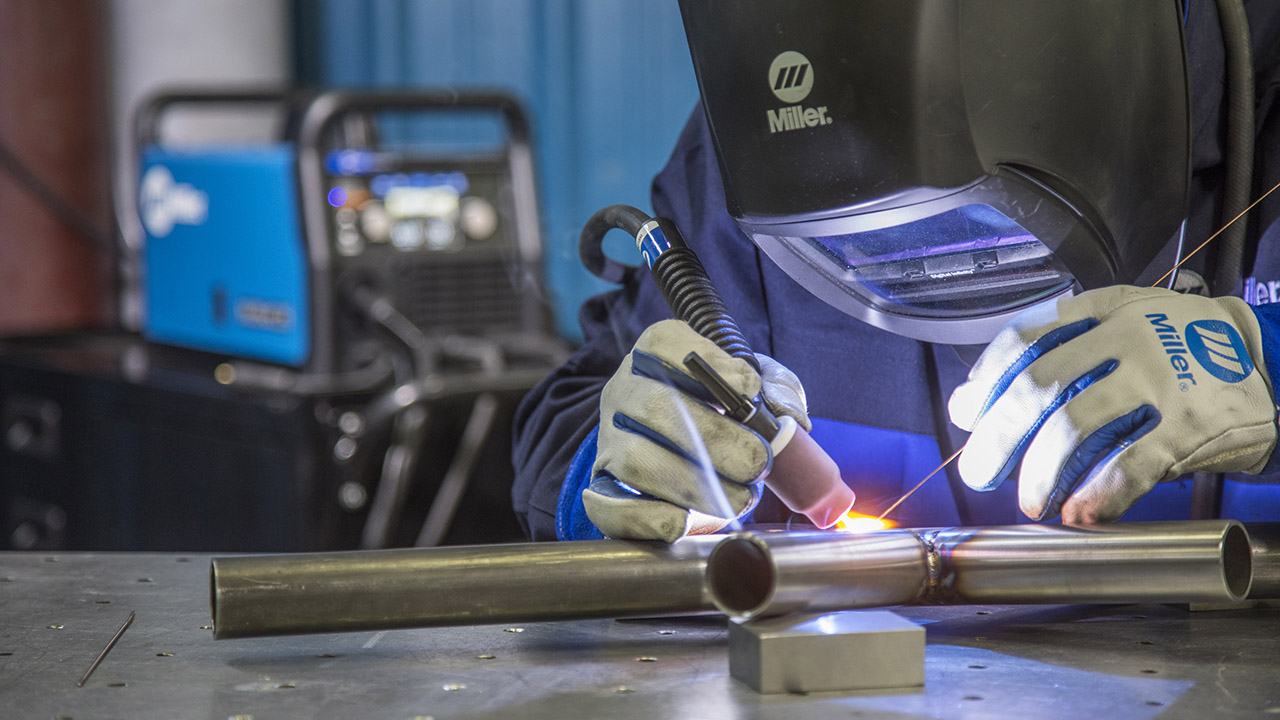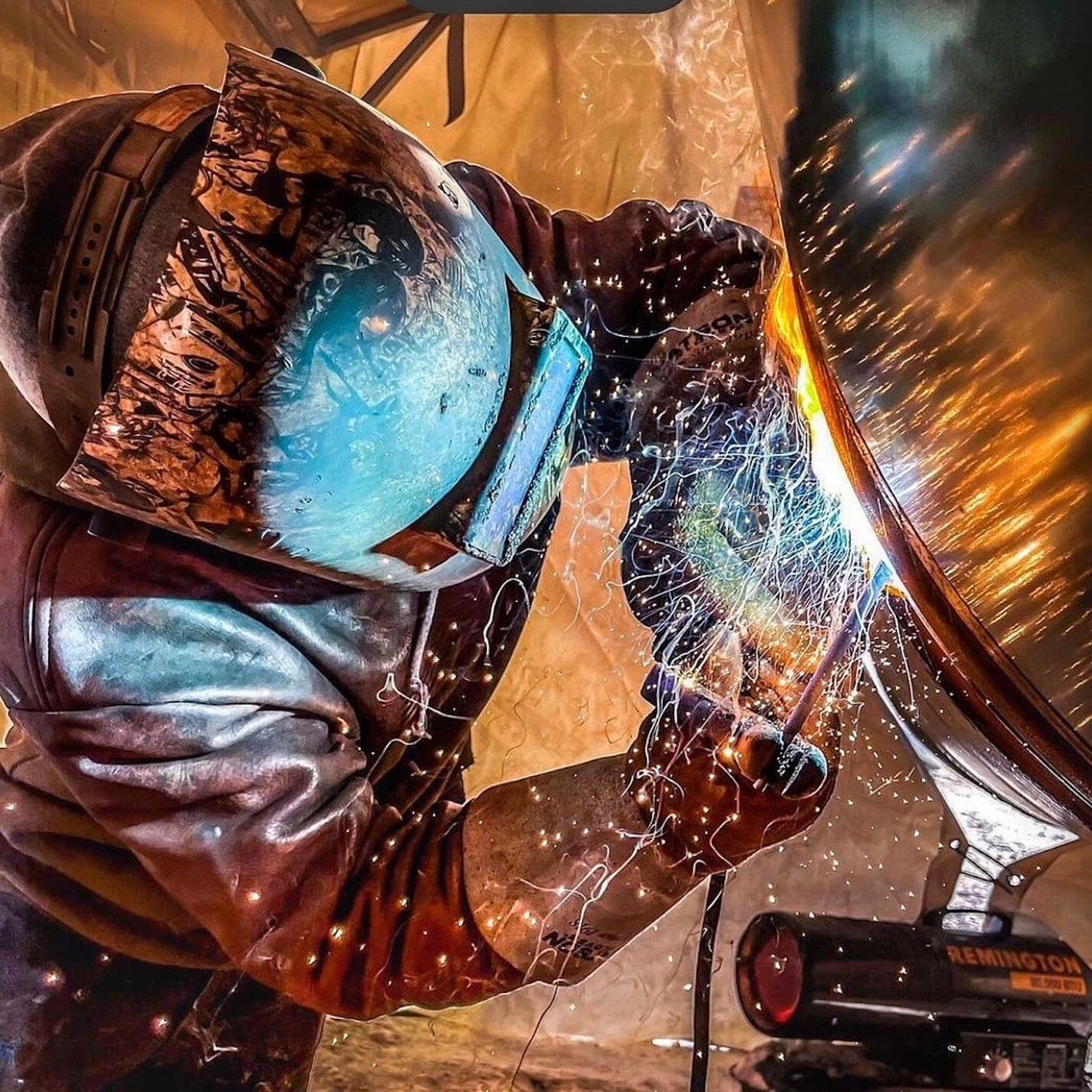All Regarding Welding: Trick Insights Into Techniques and Best Practices for Success
Welding includes a range of methods, each fit for certain products and applications. Comprehending these methods, such as GMAW, SMAW, and TIG, is necessary for achieving ideal results. In addition, the right tools and safety techniques can not be neglected. As preparation and fixing play vital functions in the welding procedure, understanding these components can significantly enhance the high quality of the final item. What are the crucial aspects that ensure a successful weld?
Comprehending Different Welding Methods
Welding strategies include a range of approaches, each suited to details applications and products. Among the most usual strategies are Gas Steel Arc Welding (GMAW), Protected Metal Arc Welding (SMAW), and Tungsten Inert Gas Welding (TIG) GMAW, likewise known as MIG welding, is popular for its rate and flexibility, making it optimal for thin products. SMAW, or stick welding, is preferred for its simpleness and efficiency in outside atmospheres, particularly with thicker steels. TIG welding provides accuracy and control, making it appropriate for elaborate job and non-ferrous metals (Welding). Each technique has its unique advantages and considerations, enabling welders to select the ideal method based on the task's demands, product type, and desired outcomes. Recognizing these techniques is necessary for effective welding
Vital Welding Tools and Devices
While different welding strategies need certain skills, the appropriate devices and devices are just as vital for attaining top quality outcomes. Essential welding devices includes welding makers, which differ depending upon the method-- such as MIG, TIG, or stick welding. Safety equipment, including gloves, aprons, and headgears, guarantees safety and security and convenience throughout the procedure. Furthermore, components and clamps aid secure materials in place, making sure accuracy in welds. Consumables like welding rods, cable, and securing gas are also important parts that affect the top quality of the weld. Furthermore, devices such as grinders and cutters promote surface prep work and post-weld completing, contributing to an expert result. Purchasing high-quality tools eventually improves the performance and efficiency of welding projects.
Security Practices in Welding
Proper safety methods are necessary in the welding sector to safeguard workers from potential threats. Welders must wear appropriate individual protective tools (PPE), including headgears with appropriate shading, gloves, and flame-resistant clothes. Ample air flow is vital to reduce direct exposure to hazardous fumes and gases generated during the welding process. Additionally, employees ought to be learnt the proper handling of welding equipment to avoid crashes. Fire safety and security procedures, such as maintaining combustible materials far from the welding area and having fire extinguishers conveniently available, are essential. Routine inspections of devices and offices can help determine potential dangers prior to they result in crashes. By adhering to these safety and security techniques, welders can develop a safer working atmosphere and decrease threats connected with their profession.
Readying Materials for Welding
Preparing products for welding is an essential step that substantially influences the high quality and integrity of the end product (Montana Mobile Welding and Repair Fabrication). Proper preparation entails cleaning up the surface areas to get rid of pollutants such as dirt, rust, and oil, which can endanger the weld. Strategies such as grinding, fining sand, or making use of solvents are typically utilized to accomplish a clean surface area. Furthermore, ensuring that the products fit with each other well is essential; spaces can lead to weak welds. It's additionally essential to consider the positioning and positioning of the parts, as this will certainly impact the simplicity of welding and the last end result. Picking the suitable filler product and ensuring compatibility with the base steels is essential for accomplishing strong, sturdy welds.
Tips for Achieving High-Quality Welds
Achieving high-grade welds requires interest to detail and adherence to best techniques throughout the welding process. Proper joint preparation is important, guaranteeing surfaces are free and tidy from pollutants. Choosing the proper filler product and welding technique based upon the base metals is critical for ideal bonding. Preserving regular traveling speed and angle while welding can stop issues and promote harmony. Additionally, managing warm input is important; extreme warm can result in warping and damaged joints. Consistently inspecting the welds during the procedure permits prompt adjustments if necessary. Ultimately, using suitable post-weld treatments, such as cleansing and anxiety alleviation, can boost the longevity and honesty of the weld, ultimately making sure an effective end result.
Repairing Common Welding Issues
Welding frequently presents obstacles that can affect the top quality and integrity of the last product. Typical problems such as porosity, inconsistent weld beads, and overheating can arise, each calling for specific repairing strategies. Recognizing these troubles is vital for welders to improve their skills and attain perfect outcomes.
Porosity Problems Described
Porosity can often be forgotten, it remains a crucial issue in welding that can endanger the integrity of an ended up product. Porosity describes the existence of small gas pockets within the weld grain, which can lead and compromise the joint to early failure. This trouble normally occurs from impurities, dampness, or improper shielding gas coverage during the welding procedure. To reduce porosity, welders should verify that the base products are clean and completely dry, use suitable securing gases, and preserve consistent welding parameters. On a regular basis checking the equipment and setting can likewise assist identify prospective problems prior to they manifest in the weld. Attending to porosity successfully is important for browse around these guys accomplishing strong, long lasting welds that satisfy top quality standards.

Irregular Weld Beads
Irregular weld beads can substantially influence the high quality and strength of an ended up product. Numerous factors add to this concern, consisting of improper traveling speed, inaccurate amperage setups, and inconsistent electrode angles. When the welder moves also quickly, a grain might show up narrow and lack infiltration, while moving too gradually can cause too much accumulation. In addition, utilizing the incorrect amperage can cause either damaging or excessive spatter, both of which compromise weld honesty. The welder's method, such as inconsistent lantern activity, can additionally lead to unequal bead look. To reduce these problems, welders need to concentrate on preserving steady, regulated motions and ensuring appropriate tools setups to achieve harmony in their welds. Consistency is essential to achieving trustworthy and solid welds.
Getting Too Hot and Bending Issues
Extreme warmth during the welding process can bring about substantial overheating and warping concerns, affecting the architectural honesty of the work surface. These problems frequently materialize as distortion, which can endanger placement and fit-up, making additional setting siegmund welding table up challenging. Elements adding to overheating include the selection of welding specifications, such as voltage and take a trip rate, in addition to the type of material being welded. To reduce these issues, welders must preserve constant travel rate and appropriate warmth input while monitoring the workpiece temperature level. In addition, pre-heating or post-weld warmth therapy can help minimize anxieties brought on by quick cooling - Montana Mobile Welding and Repair Belgrade Fabrication. Regular evaluation and adherence to ideal techniques are vital in preventing overheating and making certain the long life and dependability of bonded structures
Often Asked Concerns
What Are the Profession Opportunities in the Welding Market?
The welding sector provides diverse profession opportunities, consisting of positions as welders, assessors, designers, and educators. Experts can operate in production, construction, aerospace, and automotive fields, taking advantage of solid demand and affordable incomes in various functions.
How Can I Boost My Welding Rate Without Compromising Top Quality?
To enhance welding speed without compromising high quality, one should exercise effective methods, keep equipment, optimize settings, and boost hand-eye sychronisation. Routine training and looking for feedback can additionally greatly contribute to achieving much faster, top notch welds.
What Accreditations Are Available for Welders?
Countless accreditations exist for welders, consisting of those from the American Welding Culture (AWS), the National Center for Construction Education and Research Study (NCCER), and numerous industry-specific companies. These qualifications enhance employability and show skill efficiency.
How Does Welding Influence the Qualities of Metals?
Welding influences the homes of metals by altering their microstructure, Read Full Report which can result in adjustments in solidity, strength, and ductility. Heat input and cooling prices throughout the process significantly affect these material characteristics.
Can I Weld Dissimilar Metals Together?

Comments on “Ways to minimize distortion in Montana Mobile Welding and Repair Welding projects”